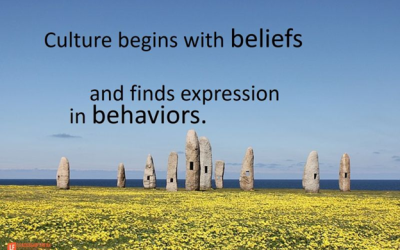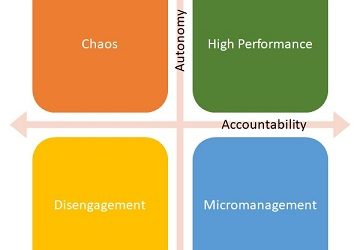We learn a lot as kids that we forget or ignore when it comes to our jobs and businesses. Watching a youth baseball game this weekend, I saw a team of nine year old kids model how we can be better at work. What lessons from sports can we apply to running a business?...
INSIGHTS
Thoughts on strategy and operations from a Fractional COO
Management and culture make a difference
If you don’t believe that management and culture make a difference in your company’s success, you are wrong. Let me give you an example from Toyota that I learned about from a recent podcast. When Toyota was making their first moves to manufacturing in the US, they...
Culture Matters
I recently received an email from a new vendor telling me they were going to miss an appointment. I couldn't have been happier. Not the usual response, is it? The vendor was making a schedule change for all clients due to weather conditions. They informed me of the...
Autonomy and Accountability
As a kid I learned about balance. I once made Kool-Aid without putting any sugar in it. Add the mix to water and stir. The results were not good. The reason is the ingredients weren’t in the proper proportion or were missing altogether. Companies without balance...
A master class in customer service
Recently, I had two very different experiences with customer service that proved to be a master class in how to deal with customers. Both situations concerned lost packages, and I spoke with the shipper rather than the company selling the product. The difference was...
High-Performing Teams Require Trust
Do you trust your employees? A better question is whether they trust you. High-performing teams require trust at all levels of the organization. A lack of trust limits innovation and collaboration. It keeps good ideas, good processes, and good people from becoming...
Organizational Clarity is Critical
A lack of organizational clarity may be the root of many of the issues you face. Without organizational clarity, you have no accountability. Team members don’t know what is expected. They don’t know how their performance will be judged. They don’t know what the...
A Prayer for our Nation
The coronavirus and its effects on our communities are evident all around us. We are awash in information and misinformation, given opinions that run from wildly pessimistic to optimistic, and left confused and not knowing who or what to believe. We don’t have to be...
The 4 C’s of Accountability
Do you wish you had more accountability in your organization? Business owners commonly express the need for more accountability when talking about their challenges. I have found leaders actually mistake other issues for a lack of accountability. Leaders build...
They’re watching you
It’s true- you have influence. People notice your actions and your words. If you are a leader – at work, at home, in the community – in any capacity, people do pay attention to what you do and what you say. Every interaction or observation can leave a lasting...
Don’t be afraid of accountability
It is not unusual for business owners to tell me they want more accountability in their organizations. My first question for them is usually something like “what’s keeping you from holding people accountable?” I know it is easier said than done. Driving...
Are your employees engaged?
According to a Gallup report, only 34% of US employees are actively engaged in their jobs. Gallup defines "engaged" as "involved in, enthusiastic about and committed to their work and workplace." What about the other 66%? 13% are "actively disengaged," and a...
Creating Clarity
It's true - inquiring minds do want to know, if you are talking about the people who make your business run every day. They crave clarity. I was reminded of this working with a client recently on some operational challenges. The client, who uses EOS, said during our...
Culture – policed or created?
Today I read an article that called HR the department responsible “for policing personnel actions and culture.” That struck me as odd. Corporate culture shouldn’t be policed. Leaders model and nurture it; employees create it. Culture is the environment and personality...
Ending a professional relationship
Parting ways with an employee is one of the most difficult endings a leader must face. We deal with ending a professional relationship today in our third post on “The End”. Every employee is going to leave the business at some point. We may not like it but...
Ready to take your first step towards breaking through to a new level of performance?
Then let’s hop on a call and see if System & Soul is right for you.
















